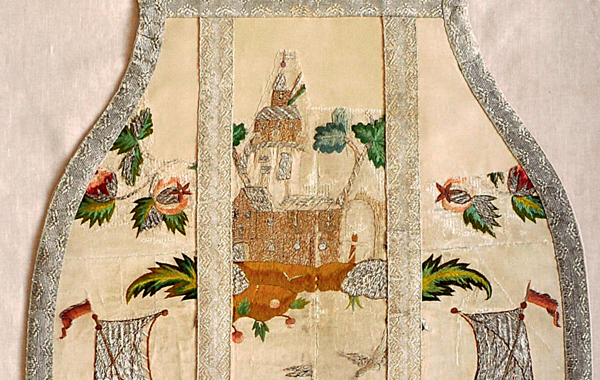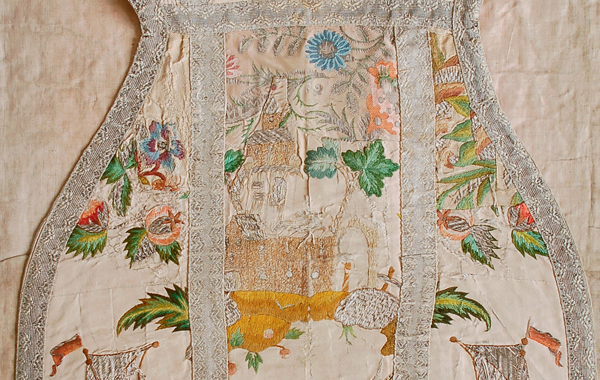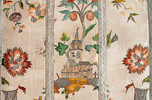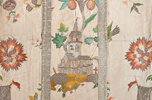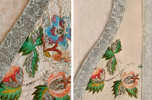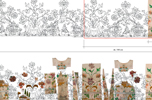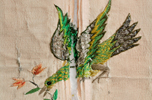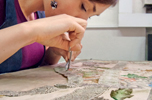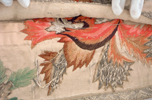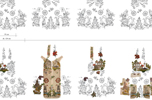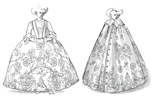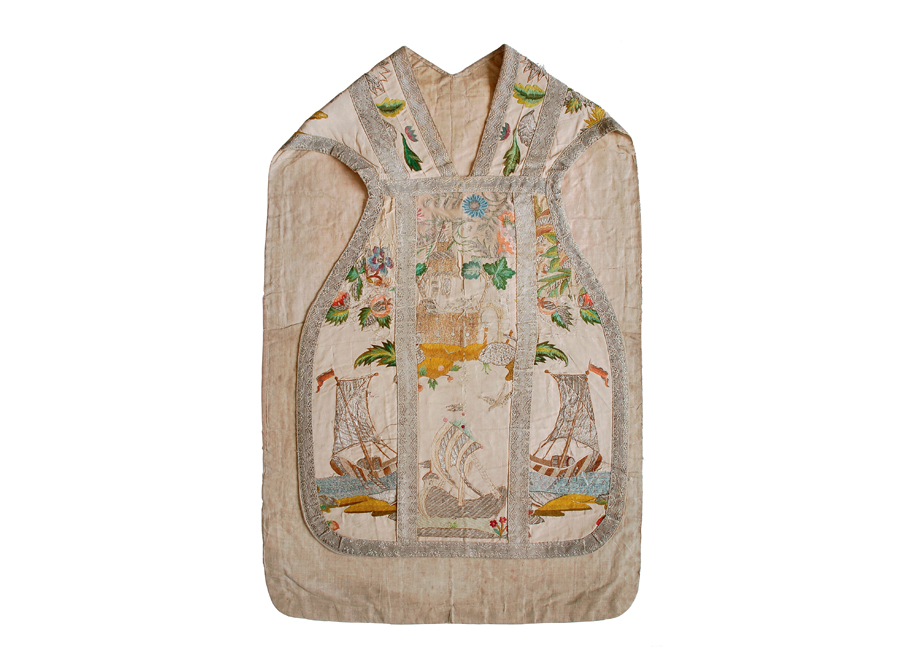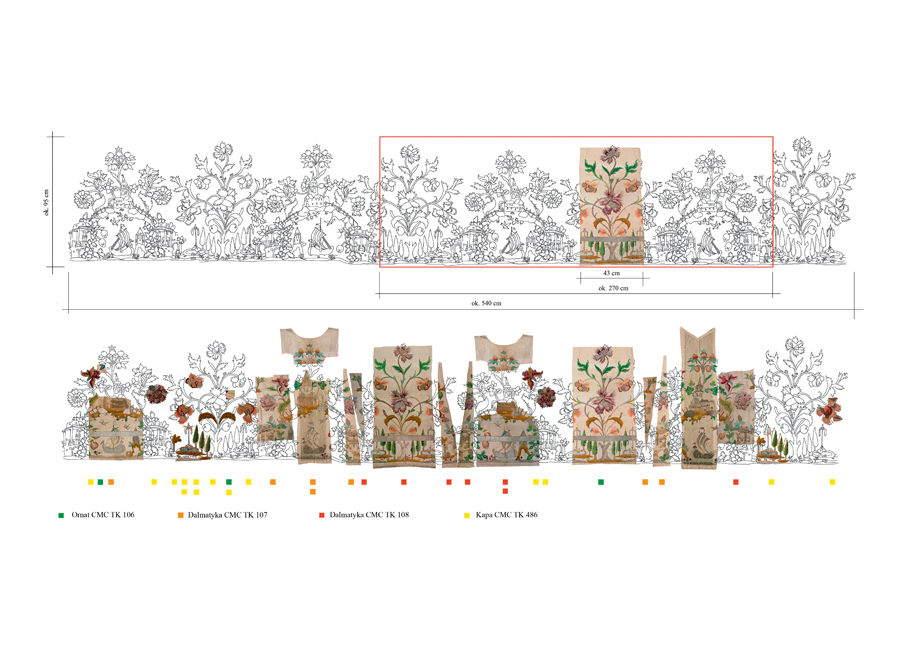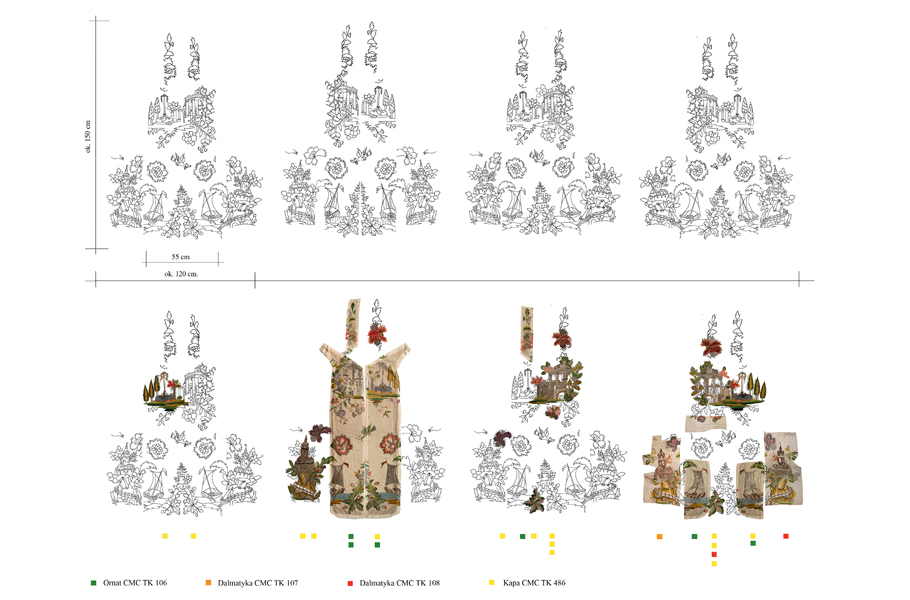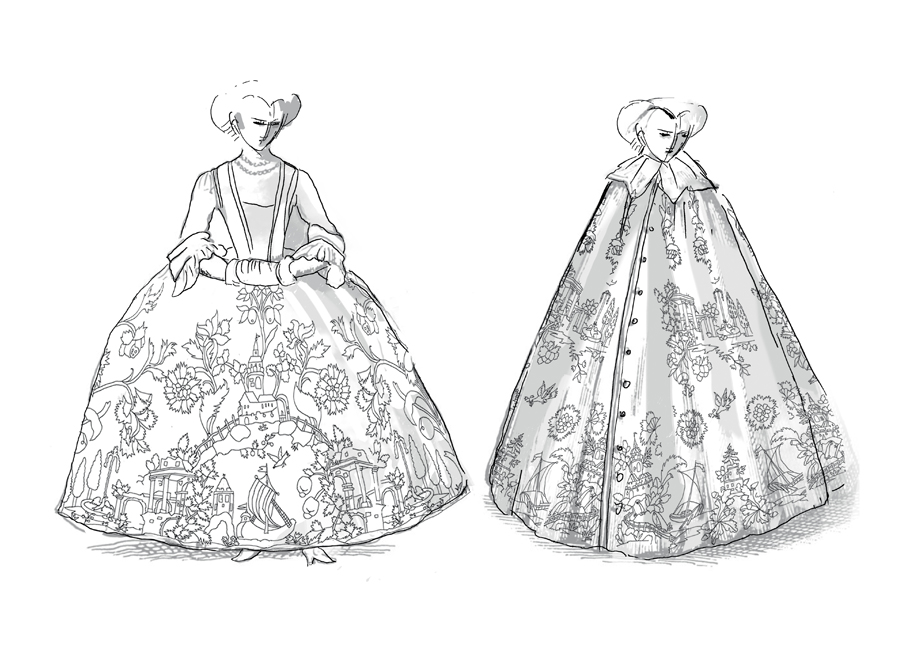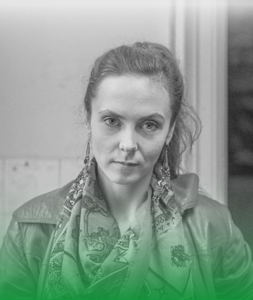
Conservation of a white chasuble from the Pauline Fathers’ Jasna Góra monastery; Accession No. CMC TK 106
(first half of the 18th – century)
Supervisor:
Professor Helena Hryszko
Studio of Conservation and Restoration of Historic Textiles
> Monika Koc
I chose to study at the Chair of Conservation and Restoration of Textiles because of the great curiosity I felt for textile antiquities and a profound need to preserve them. The conservation of textiles is a very responsible and important task, requiring thorough vocational training. For me, conservation is not only a profession, but also a passion.
My professional interests include history of textiles, costumology and design. I am particularly interested in embroidery, tapestry-making and dyeing. I am fascinated with transforming textile antiquities and preserving them in a form other than their original one. In my opinion it is very important and valuable to determine the original shape of these objects, not only for the sake of history of textiles, but for the entire history of art.
My guiding principles during conservation implementations are: minimal interference with the structure of a piece, confining procedures to those necessary to save it, and proceeding according to the principles of conservation ethics. I believe that a conservator, in addition to necessary knowledge in the field of technique, technology and the history of textiles, should have a well-developed aesthetic sense. Professor Helena Hryszko, under whom I was honoured to study, is the last word
to me in all these aspects of the conservation of textiles.
I am also interested in the history of posters, old and contemporary art, industrial design and goldsmithery. For me, the unique combination of knowledge from the fields of history, technique and technology of fabrics is an endless source of inspiration for creative activities which enable the transfer of early technological solutions to the contemporary language of art.
> Professor Helena Hryszko
Monika Koc’s degree piece is dedicated to an eighteenth-century chasuble (Accession No. CMC TK 106) from the treasury of the Pauline Fathers’ Jasna Góra monastery in Częstochowa. The chasuble is a part of a vestment set, also including two dalmatics and a cope. The set was composed of 79 pieces of fabric adorned with embroidery depicting sailing ships, pieces of architecture and floral ornaments. The nature of the embroidery decoration indicated that the pieces originated from a secular object, and were presented as a votive offering.
The degree piece consists of three major parts: conservation of the chasuble, analysis of ornamental decoration of the entire set and a theoretical thesis titled Attempt at reconstruction of original shape of a secular object preserved in a set
of vestment at the Jasna Góra Monastery, written under the supervision
of Professor Jakub Pokora.
Conservation of the chasuble included 54 various measures, divided into three main stages. All the measures required a wide variety of skills as well as great care and patience. The documentation of the conservation work is elaborated in 159 pages. The 57 drawing illustrations and microscopic photographs included
in the text, as well as the 44 photographs in the photographic documentation, perfectly illustrate the course of the conservation work and contribute
to a greater clarity of description.
The most interesting part of the degree piece is the analysis of the ornamental decoration, the identification of an object out of which the set of liturgical paraments was composed and the determination of its original shape, dimensions, ornamental composition, and thus its function. When conducting analytical studies the degree candidate used the opportunities offered by computer graphics. Monika Koc presented the outcomes of her analytical studies and the reconstruction efforts in a clear and attractive way. The degree piece was awarded a very high grade.





